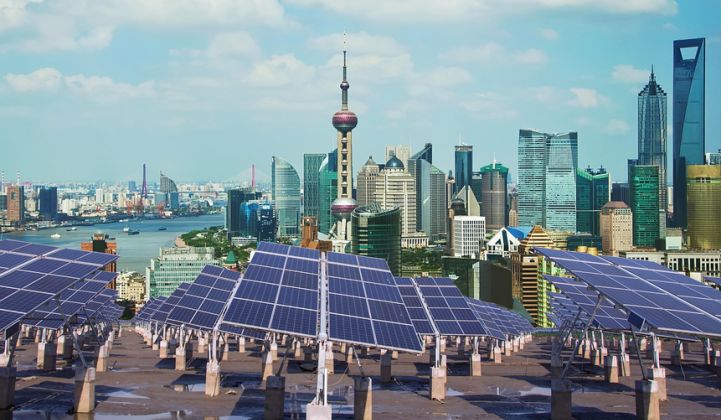China's solar installation figures look impressive on paper. As of June, the country had installed a cumulative 35 gigawatts of projects -- an impressive feat considering that its domestic PV market was virtually nonexistent five years ago.
But those figures don't tell us much about the performance of projects.
We've seen increasing reports about defective panels and project design flaws limiting solar electricity production. In January, Bloomberg reported that 23 percent of panels sampled around the country failed to meet China's technical standards. Project owners have also faced interconnection delays, which served to cut installations by 3 gigawatts in 2014 compared to 2013 levels.
New figures from China's National Energy Administration show another problem looming for solar project owners: curtailment.
Across the country, solar power plants are fighting with coal plants for access to the grid while nationwide growth in electricity consumption slows. In many cases, solar is losing. According to Chinese government data released this week, 9 percent of the country's solar output was curtailed through the first half of the year due to grid constraints.
In Gansu province, 28 percent of solar generation never made it onto the grid; in Xinjiang province, 19 percent of solar electricity was cut back.
From January through June, NEA reports that solar projects around the country generated 19 terawatt-hours of electricity.
The capacity installation figures are still strong. In the first half of the year, 7.7 gigawatts of projects were completed -- 6.6 gigawatts of them utility-scale and 1.1 gigawatts distributed.
However, the curtailment issue could cause problems for developers that are already dealing with a slow subsidy distribution process.
"Idle capacity cuts into the feed-in tariff payments that solar plants receive, and indicates there is a larger problem of weak electricity consumption. A miscalculation on demand will undermine the amount gathered for the feed-in tariff surcharge, potentially further delaying payments down the road," said Adam James, a senior analyst at GTM Research focused on global demand.
China's feed-in tariff program is already plagued by administrative delays. Forcing producers to cut back on their generation will make things more financially complicated for project owners.
The problem is not unique to solar. For years, wind producers in China have had trouble connecting to the grid. And when they do connect, the government often forces them to halt electricity production. According to Reuters, one-fifth of China's wind electricity was curtailed in the first three months of 2015.
By 2020, China could be installing 24 gigawatts of solar PV projects yearly, according to GTM Research. But will they be granted access to the grid? That remains uncertain.
"Despite solar receiving strong incentive support and installations reaching record-setting highs, the Chinese electricity market is still grappling with serious structural challenges," said James.
For more on China's complicated solar market, listen to our conversation with Adam James on GTM's Energy Gang podcast:



